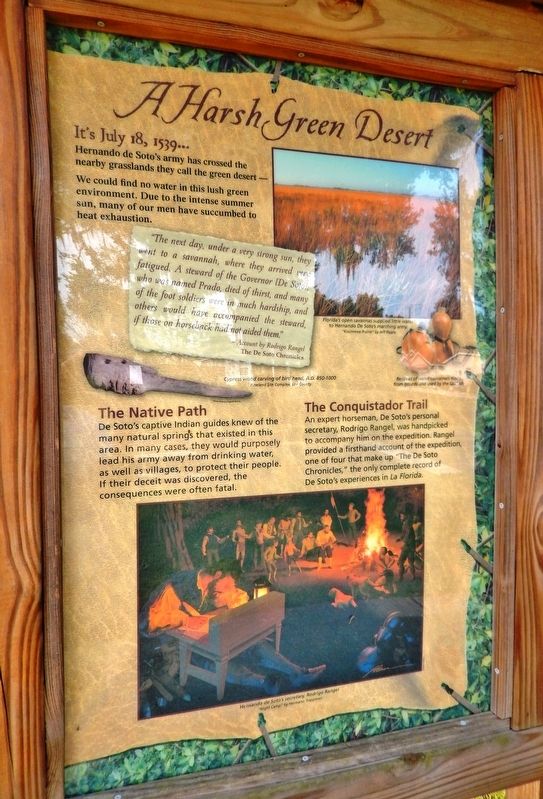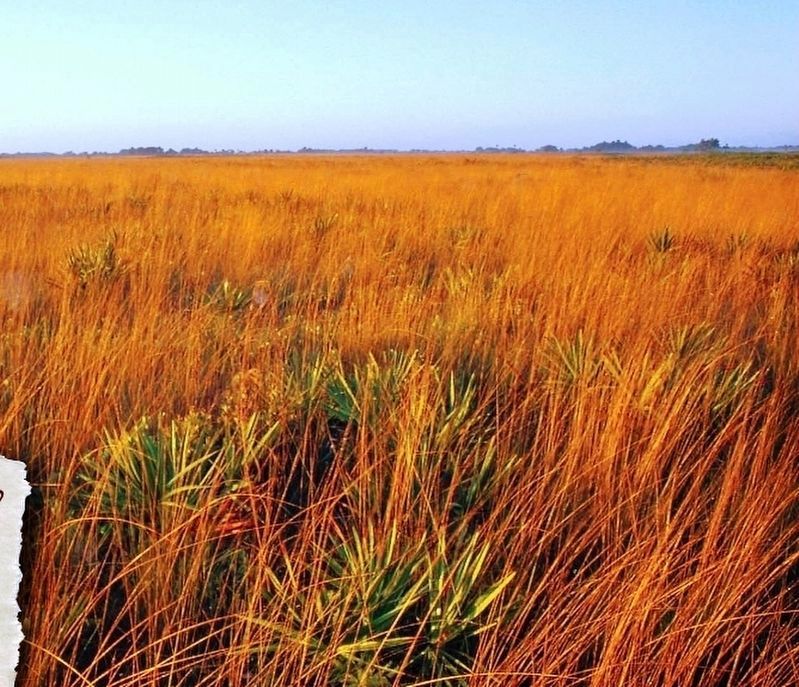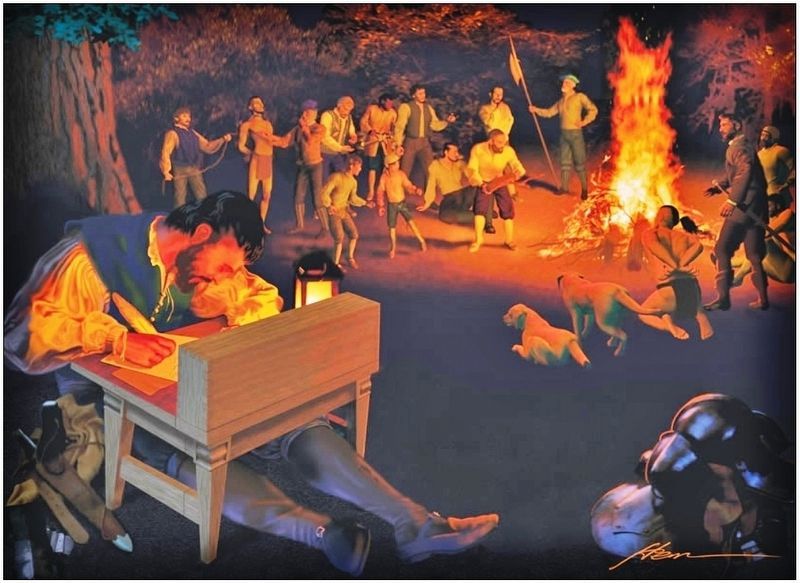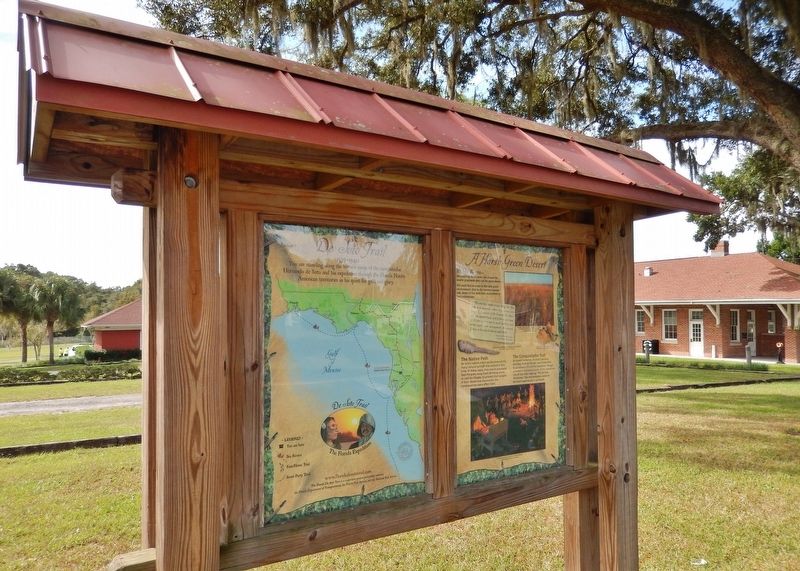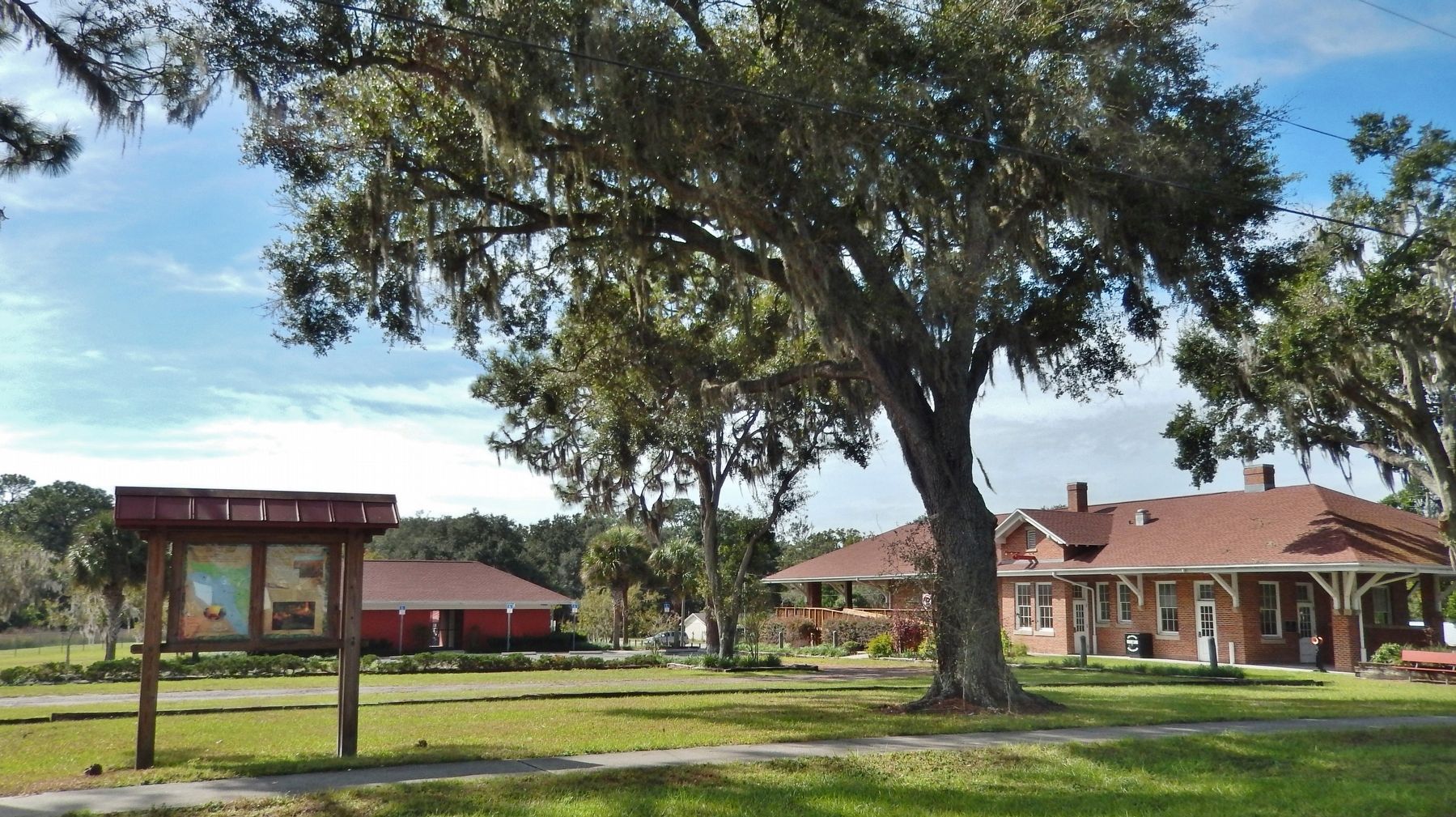Zephyrhills in Pasco County, Florida — The American South (South Atlantic)
A Harsh Green Desert
Florida De Soto Trail
— July 18, 1539 —
Hernando de Soto’s army has crossed the nearby grasslands they call the green desert –
We could find no water in this lush green environment. Due to the intense summer sun, many of our men have succumbed to heat exhaustion.
”The next day, under a very strong sun, they went to a savannah, where they arrived very fatigued. A steward of the Governor [De Soto], who was named Prado, died of thirst, and many of the foot soldiers were in much hardship, and others would have accompanied the steward, if those on horseback had not aided them.”
- Account by Rodrigo Rangel
The De Soto Chronicles
The Native Path
De Soto’s captive Indian guides knew of the many natural springs that existed in this area. In many cases, they would purposely lead his army away from drinking water, as well as villages, to protect their people. If their deceit was discovered, the consequences were often fatal.
The Conquistador Trail
An expert horseman, De Soto’s personal secretary, Rodrigo Rangel, was handpicked to accompany him on the expedition. Rangel provided a firsthand account of the expedition, one of four that make up “The De Soto Chronicles,” the only complete record of De Soto’s experiences in La Florida.
Erected by Florida De Soto Trail, Florida Department of Transportation, the Florida Park Service, and the National Park Service. (Marker Number 9.)
Topics. This historical marker is listed in these topic lists: Colonial Era • Exploration • Native Americans • Notable Events. A significant historical date for this entry is July 18, 1539.
Location. 28° 13.799′ N, 82° 10.145′ W. Marker is in Zephyrhills, Florida, in Pasco County. Marker is on South Avenue east of Depot Lane, on the right when traveling east. Marker is located beside the sidewalk, in front of the Zephyrhills Train Depot Museum. Touch for map. Marker is at or near this postal address: 39110 South Ave, Zephyrhills FL 33542, United States of America. Touch for directions.
Other nearby markers. At least 8 other markers are within 2 miles of this marker, measured as the crow flies. Zephyrhills Railroad Depot (a few steps from this marker); Zephyrhills Depot (within shouting distance of this marker); Aaron W. Guynn (approx. 0.2 miles away); Veterans Park (approx. ¼ mile away); Zephyrhills Army Airfield (approx. 0.3 miles away); GAR Hall (approx. 0.8 miles away); Veterans Memorial (approx. 1.3 miles away); Oakside Cemetery (approx. 1.3 miles away). Touch for a list and map of all markers in Zephyrhills.
More about this marker. Marker is a large, composite plaque mounted vertically within a heavy-duty wooden kiosk.
Related markers.
Click here for a list of markers that are related to this marker. Florida De Soto Trail
Also see . . .
1. The De Soto Chronicles Vol 1 & 2: The Expedition of Hernando de Soto to North America in 1539-1543. The De Soto expedition was the first major encounter of Europeans with North American Indians in the eastern half of the United States. De Soto and his army of over 600 men, including 200 cavalry, spent four years traveling through what is now Florida, Georgia, Alabama, North and South Carolina, Tennessee, Mississippi, Louisiana, Arkansas, and Texas. (Submitted on November 5, 2018, by Cosmos Mariner of Cape Canaveral, Florida.)
2. De Soto’s Expedition to North America. In 1536, de Soto obtained a royal commission to conquer and settle the region known as La Florida (now the southeastern United States), which had been the site of earlier explorations by Juan Ponce de León and others. De Soto set out from Spain in April 1538, set with 10 ships and 700 men. After a stop in Cuba, the expedition landed at Tampa Bay in May 1539. They moved inland and eventually set up camp for the winter at a small Indian village near present-day Tallahassee. (Submitted on November 5, 2018, by Cosmos Mariner of Cape Canaveral, Florida.)
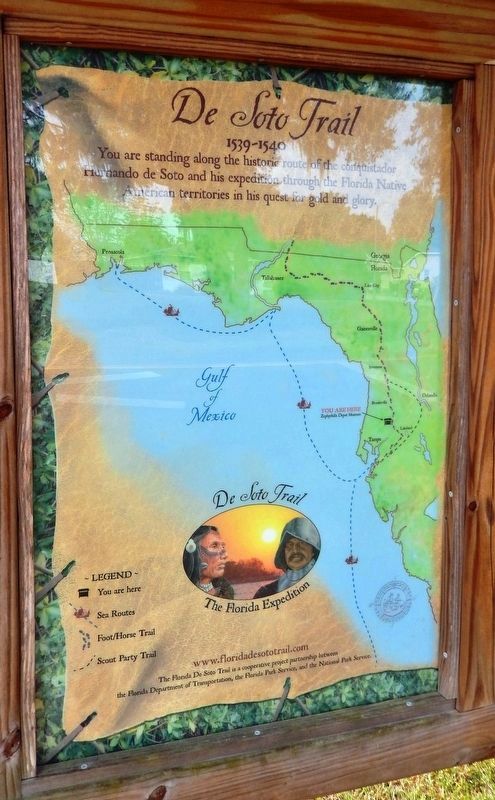
Photographed By Cosmos Mariner, November 1, 2018
4. Florida De Soto Trail Map (panel to the left of marker in kiosk)
1539-1540
Credits. This page was last revised on December 22, 2020. It was originally submitted on November 4, 2018, by Cosmos Mariner of Cape Canaveral, Florida. This page has been viewed 316 times since then and 21 times this year. Last updated on November 21, 2018, by Cosmos Mariner of Cape Canaveral, Florida. Photos: 1, 2, 3, 4, 5, 6. submitted on November 5, 2018, by Cosmos Mariner of Cape Canaveral, Florida. • Bernard Fisher was the editor who published this page.
